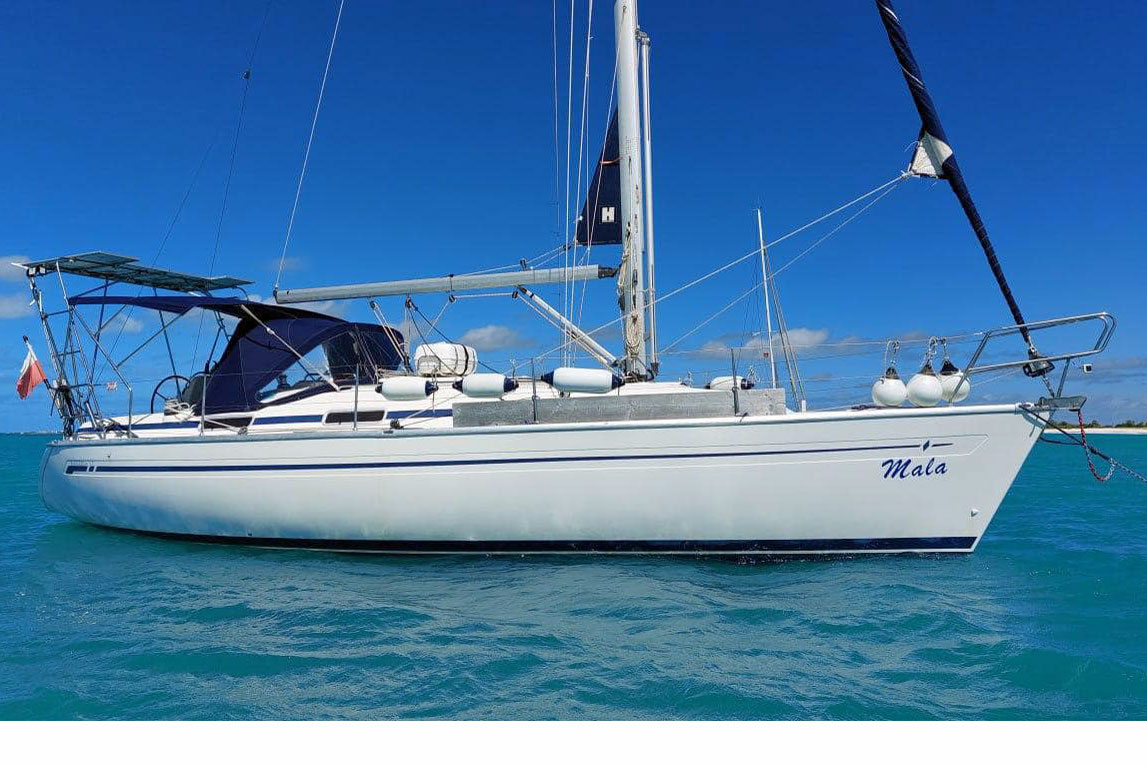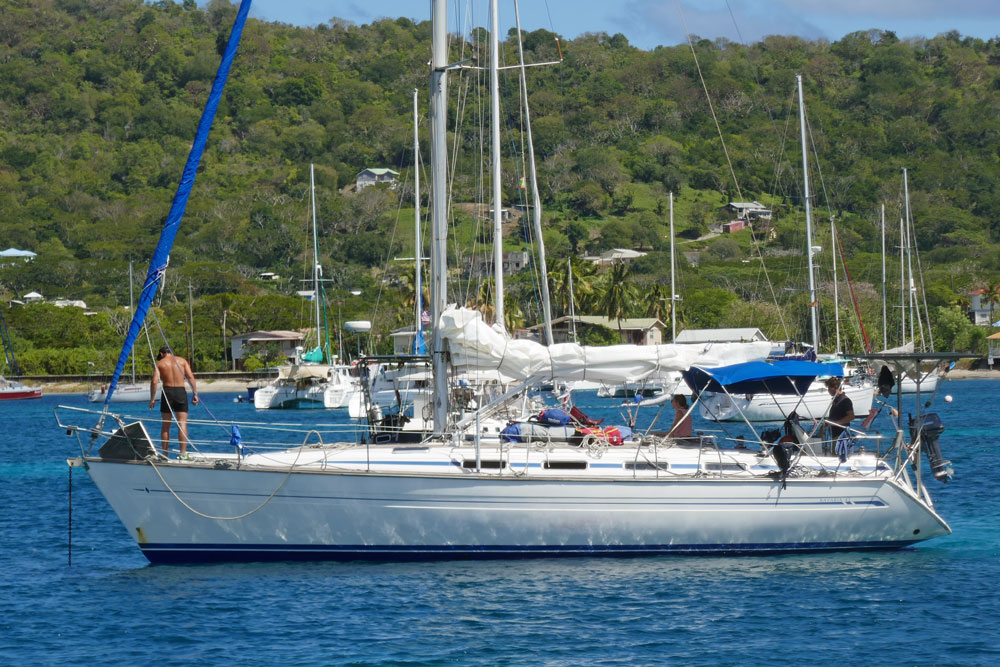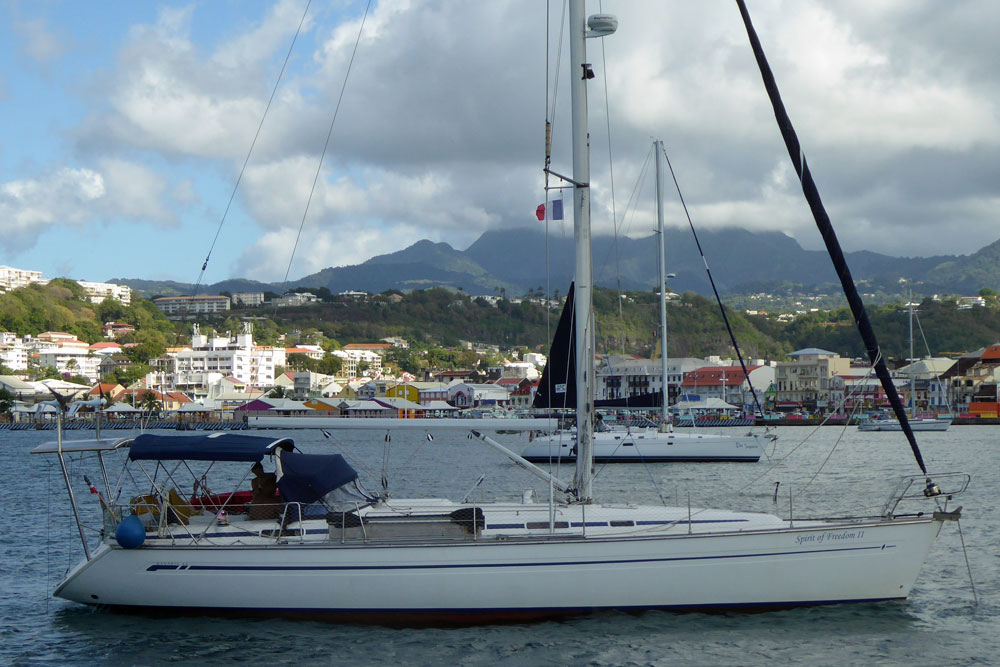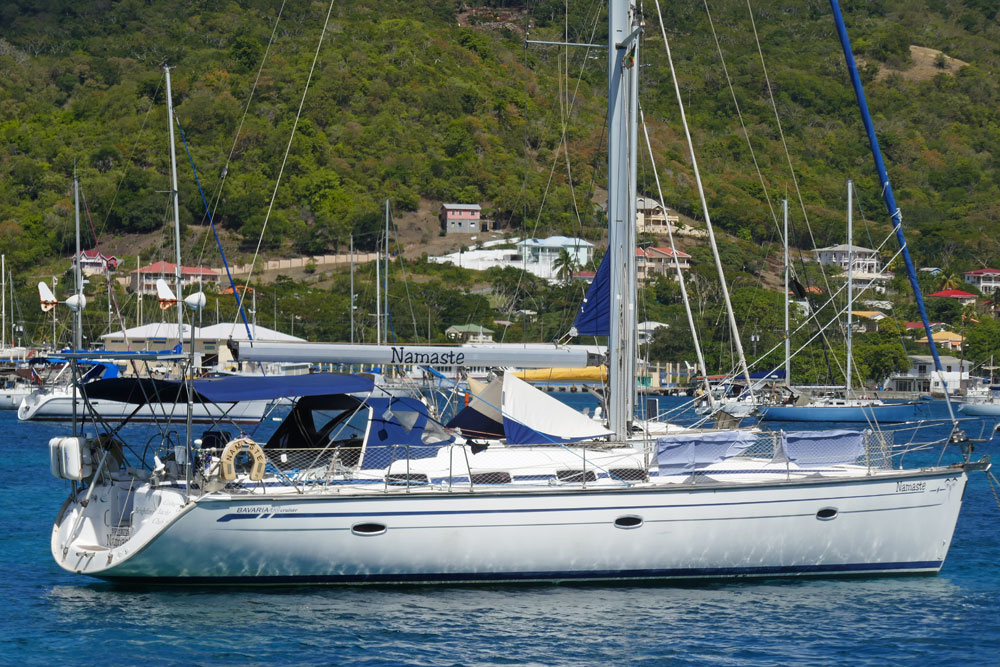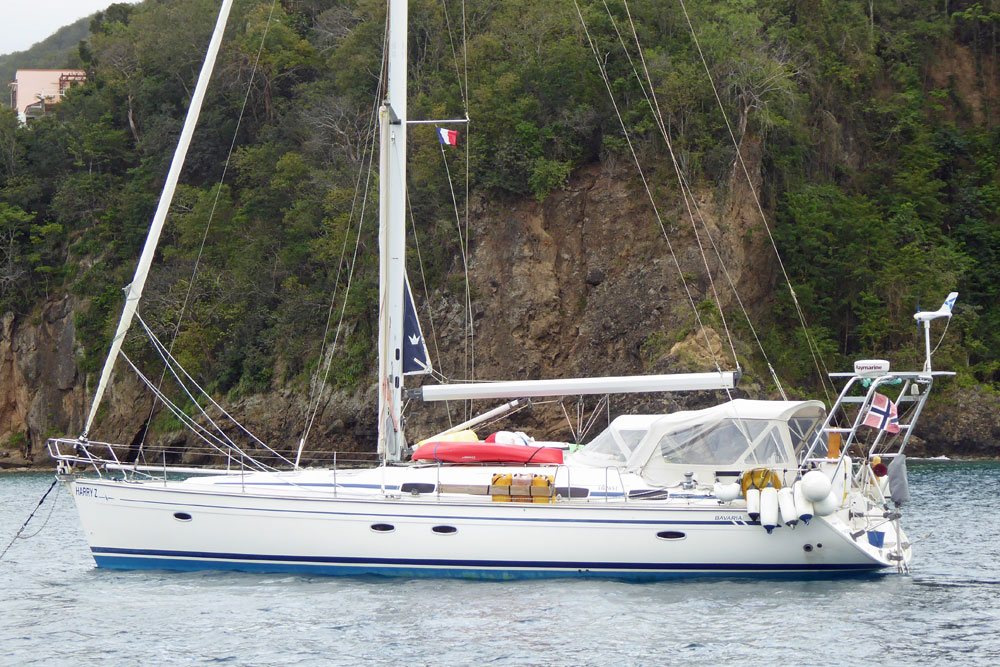- Home
- Cruising Yachts 35' to 40'
- Bavaria 37 Cruiser
The Bavaria 37 Cruiser
Specs & Key Performance Indicators
The Bavaria 37 Cruiser was designed by J&J Design and constructed by Bavaria Yachtbau, a boatbuilder based in Giebelstadt, Germany.
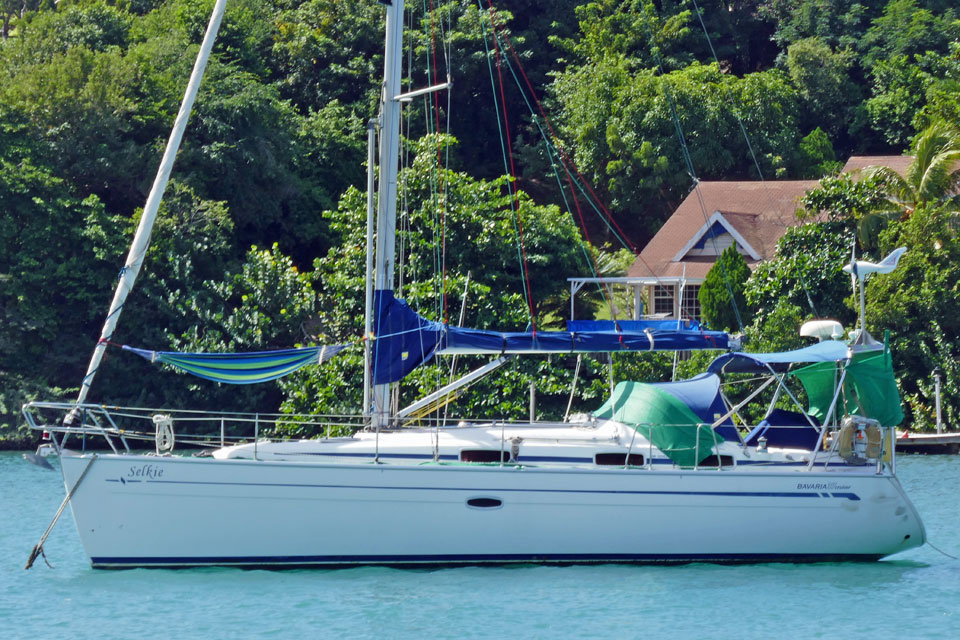 'Selkie', a Bavaria 37 Cruiser anchored in Prickly Bay, Grenada
'Selkie', a Bavaria 37 Cruiser anchored in Prickly Bay, GrenadaThe Bavaria 37 Cruiser depicted here is a development of the earlier Bavaria 37 produced between 1995 and 2005, which was also designed by the Slovenian partnership of J&J Design.
The current version was designed by Bruce Farr with production commencing in 2013.
Published Specification for the Bavaria 37 Cruiser
Keel & Rudder Configuration: Fin keel with a spade rudder
Hull Material: Fiberglass
Length Overall: 11.35m (37'2")
Waterline Length: 9.80m (32'2")
Beam: 3.80m (12'6")
Draft:
- Standard keel: 1.95m (6'5")
- Shallow keel: 1.63m (5'4")
Rig Type: Fractional Sloop
Displacement: 6,900kg (15,212lb)
Ballast: 2,200kg (4,850lb)
Designer: J&J Design
Builder: Bavaria Yachts
Year First Built: 2005
Year Last Built: 2008
Number Built: Approximately 500 units
Published Design Ratios for the Bavaria 37 Cruiser
The Key Performance Indicators (KPIs)
Based on the published design ratios for the Bavaria 37 Cruiser, we can infer the following theoretical sailing characteristics:
- Sail Area/Displacement Ratio (20.3): This ratio indicates that the Bavaria 37 Cruiser has relatively high performance capabilities. With a ratio above 20, the boat is likely to have good power-to-weight efficiency, meaning it should perform well under sail and be relatively fast during typical sailing conditions.
- Ballast/Displacement Ratio (29.0): A ratio of 29.0 suggests a boat that has moderate stiffness, providing a balance between performance and stability. While not as stiff as boats with a higher Ballast/Displacement Ratio (e.g., 40+), this ratio is still within the range that can offer dependable performance. However, it's important to note that this ratio doesn't take into account the placement of the ballast. Ballast location (e.g., a deep keel versus a shallow keel) can significantly impact the boat's actual stability and stiffness. Thus, while the ratio provides some insight, it isn't a complete measure of stability.
- Displacement/Length Ratio (203): The Bavaria 37 Cruiser falls into the category of "Moderate Displacement" with a Displacement/Length Ratio of 203. This suggests that the boat should have a good balance, requiring a moderate amount of sail area to reach its hull speed. Moderate displacement boats often provide a good compromise between performance and comfort, being able to handle a variety of wind and sea conditions without excessive motion.
- Comfort Ratio (24.2): With a Comfort Ratio of 24.2, this boat appears to be suited for coastal cruising with moderate stability and comfort. It implies that the Bavaria 37 Cruiser will show some movement in terms of pitching, rolling, or heeling but should still provide a comfortable ride for a typical coastal cruising scenario. This level of comfort is usually adequate for most family-orientated sailing experiences but may be more challenging in rougher, offshore conditions.
- Capsize Screening Formula (2.02): A Capsize Screening Formula of 2.02 suggests that the Bavaria 37 Cruiser is on the borderline for bluewater capability. Ideally, a score of 2.0 or lower indicates better suitability for long ocean passages. At 2.02, it suggests that while the boat has reasonable capability for offshore sailing, it might not be as inherently secure as boats with a lower capsize ratio.
But these ratios are not absolute. For example...
- The Ballast/Displacement Ratio: While this ratio gives a general sense of stability, it does not account for the distribution or form of the ballast, which can heavily influence the boat's true stability. For instance, ballast concentrated at the bottom of a deep keel will offer more effective stability than the same amount in a shallow keel.
- Comfort Ratio: Ted Brewer's Comfort Ratio can favor older design philosophies—typically heavier, narrow-beamed, and long-overhang vessels. Modern light-displacement, beamy cruisers with features like plumb bows can score less favorably on this ratio but could still offer considerable comfort due to advances in design and technology not accounted for by this simple metric.
These numbers give a snapshot of the theoretical performance and comfort of the Bavaria 37 Cruiser but must be balanced with experiential data and practical reviews from sailors who have tested the vessel under various conditions.
Here's how to calculate the KPIs yourself - without having to wrestle with the mathematics...
This article was written with the assistance of Gemini, a large language model developed by Google. Gemini was used to gather information, summarize research findings, and provide suggestions for the content and structure of the article.
Other sailboats in the Bavaria product range include:
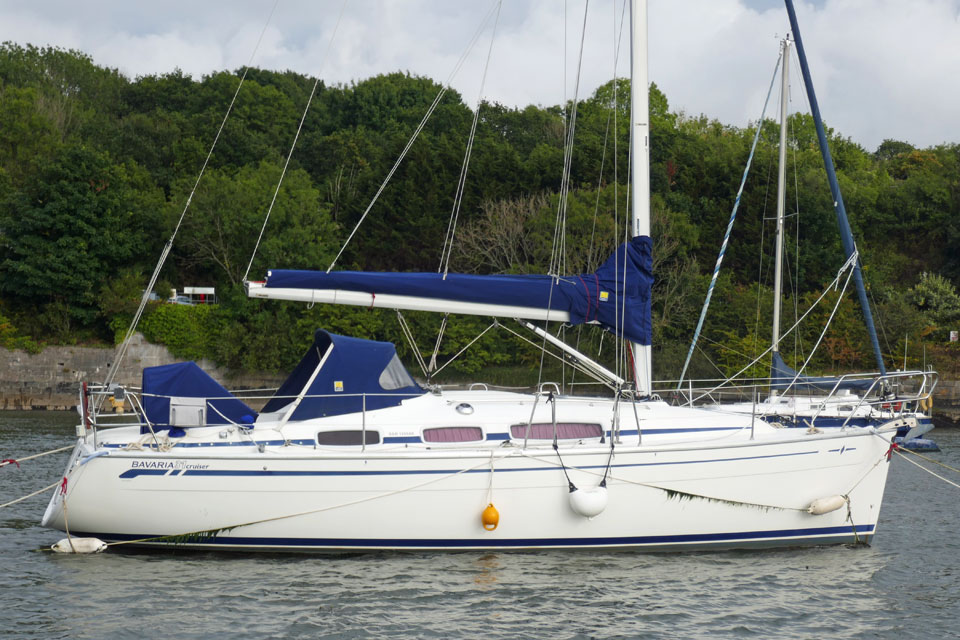 The Bavaria 31
The Bavaria 31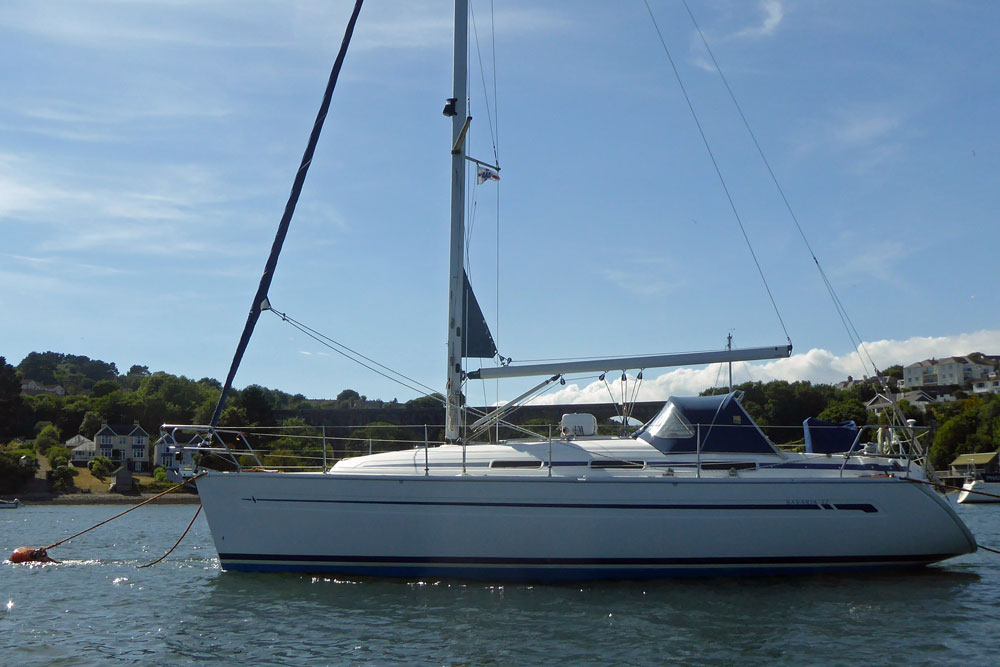 The Bavaria 32
The Bavaria 32Recent Articles
-
Hustler Sailboats: History, Models, & Buying Guide for UK Sailors
Jul 12, 25 03:59 AM
Explore the legacy of British-built Hustler sailboats like the Hustler 30 & Oyster SJ35. Discover their design, construction, performance, and what to look for when buying a used model. -
Hurley Sailboats: Seaworthy, Classic Cruisers & Buying Guide
Jul 11, 25 02:59 AM
Discover the enduring appeal of Hurley sailboats! Explore their history, robust design, iconic Hurley 22, and essential tips for buying a used Hurley. Your go-to guide for these classic seaworthy yach… -
B&R Rig Explained: Hunter Sailboat Mast Design Pros & Cons
Jul 10, 25 11:08 AM
Demystify the B&R rig, a unique mast design found on many Hunter sailboats. Learn its advantages for cruisers, key features, and potential downsides.
